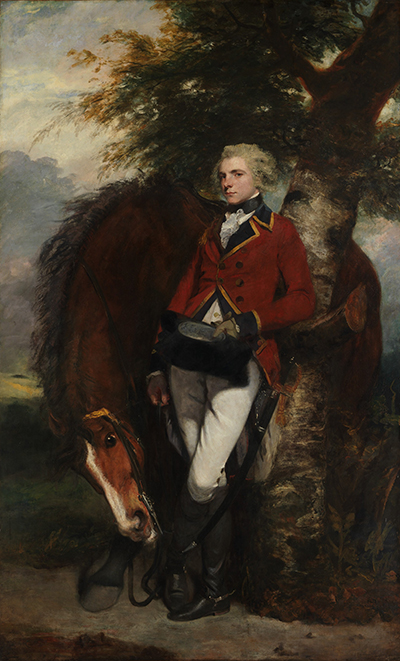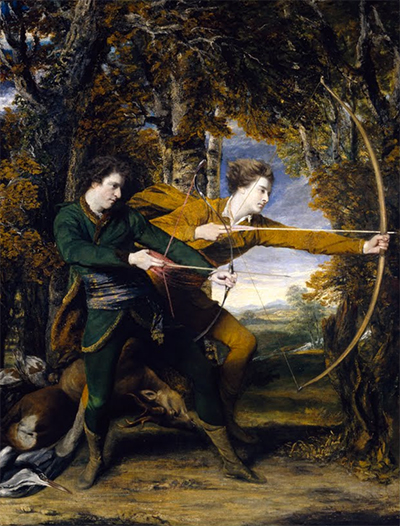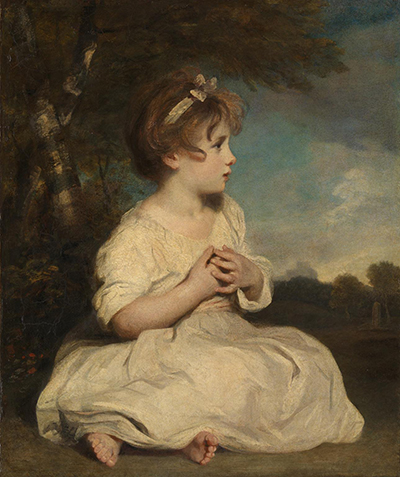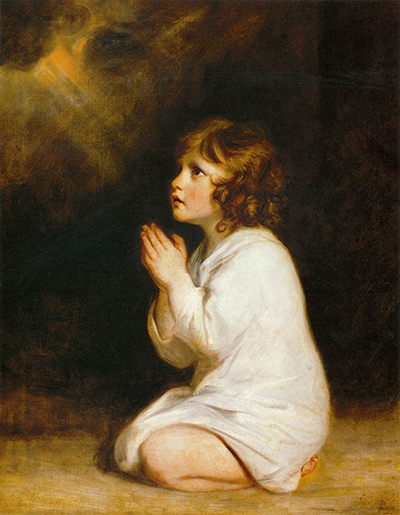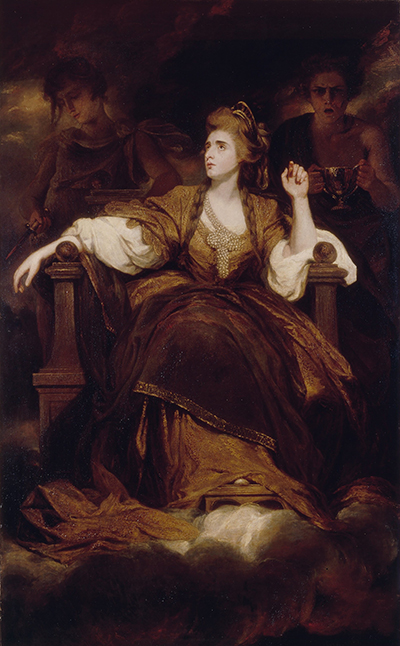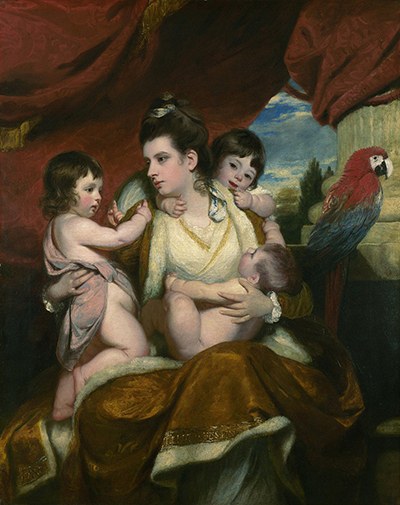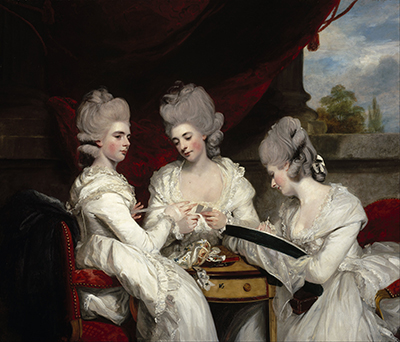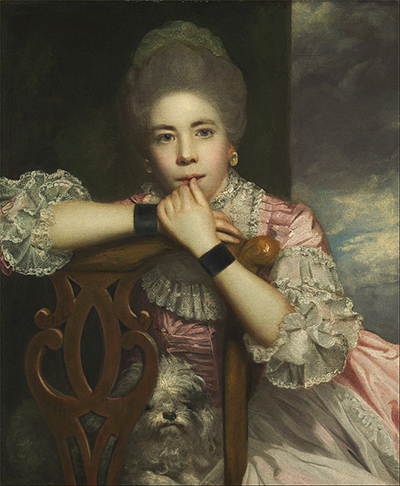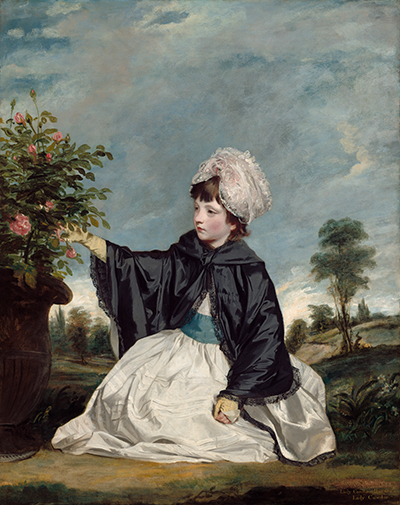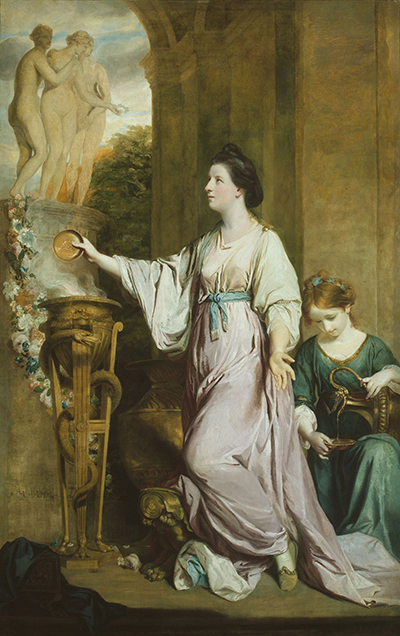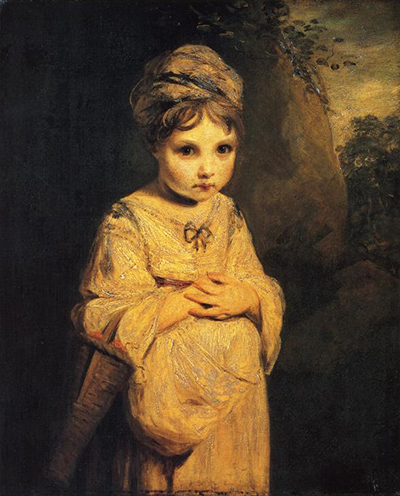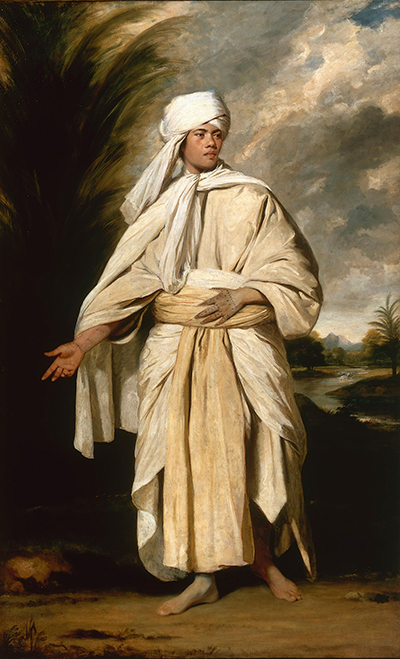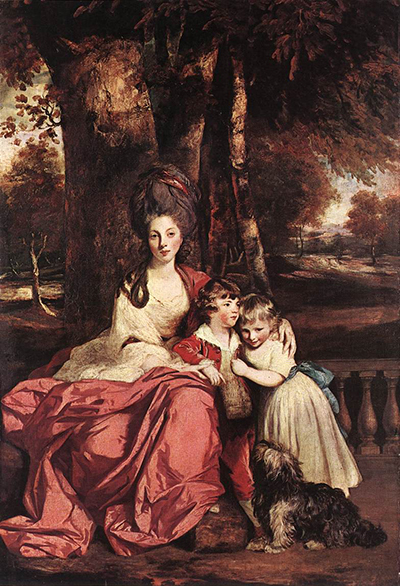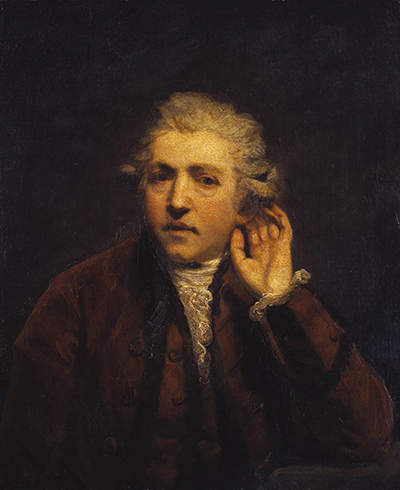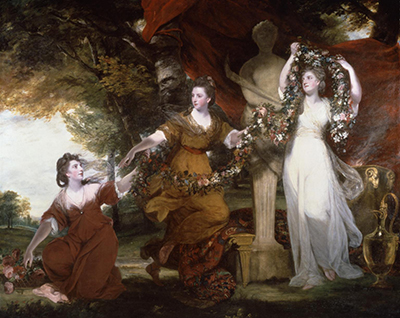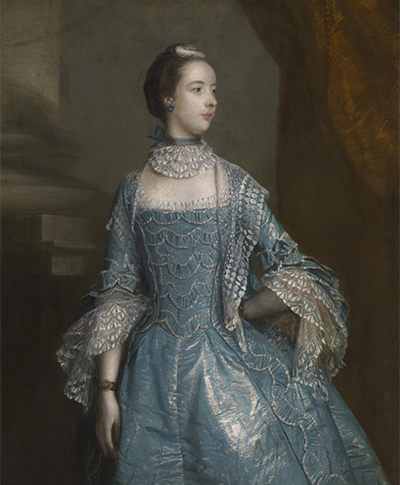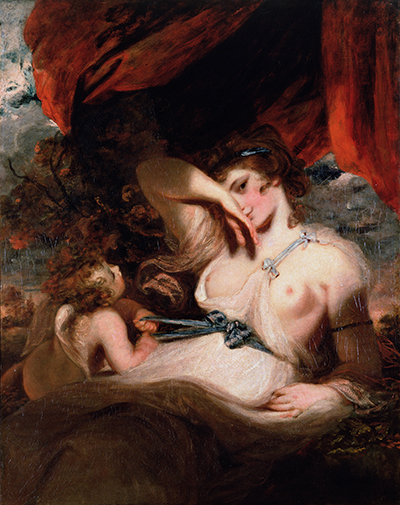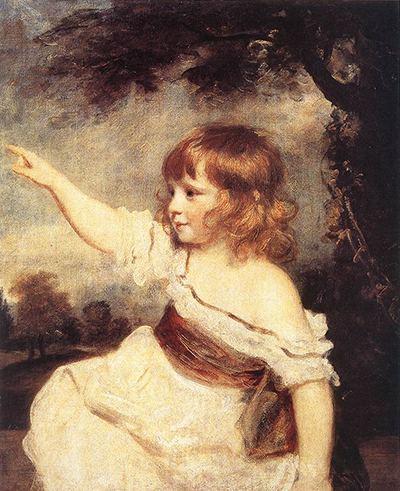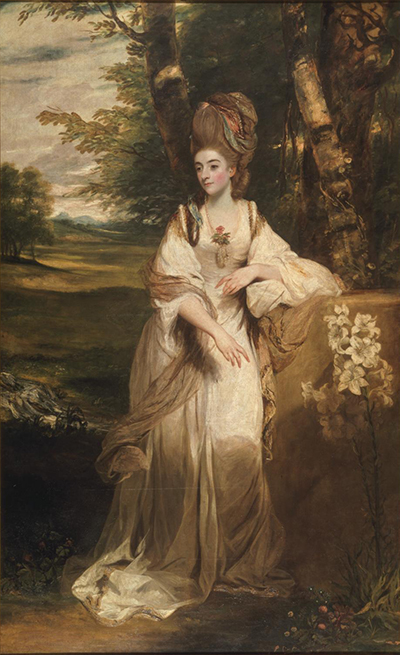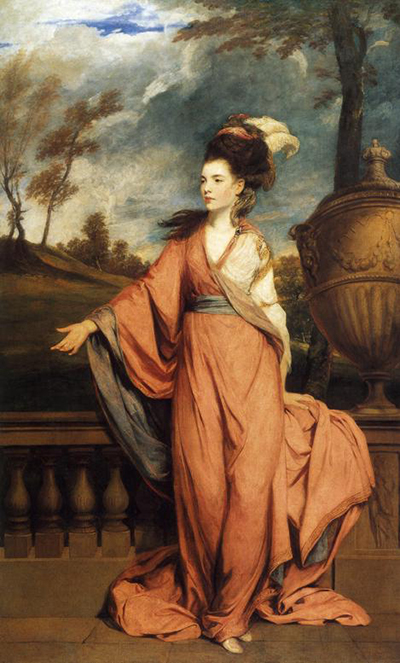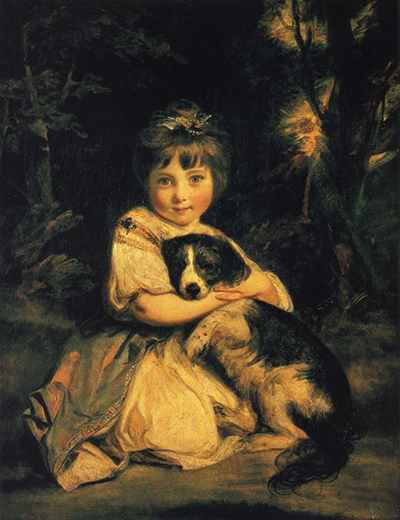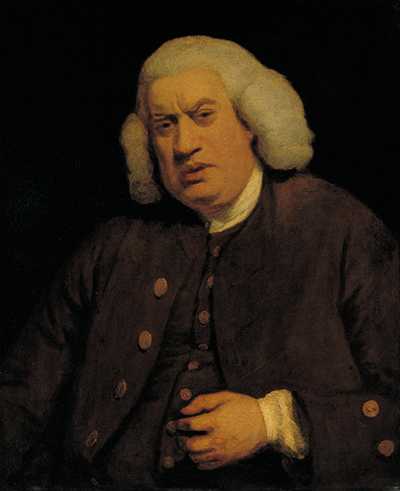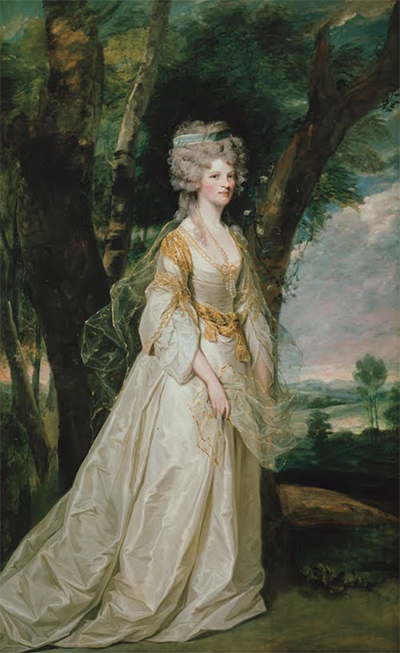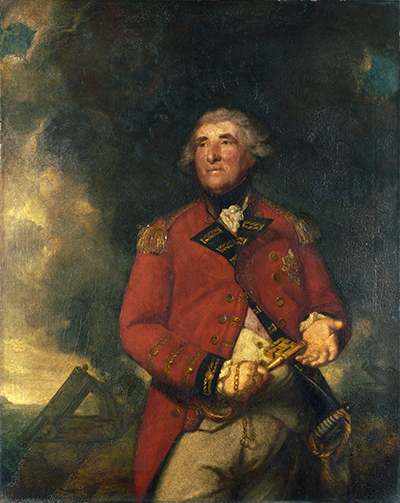Sir Joshua Reynolds' paintings were produced in a formulaic manner which was influenced by his relationships with fellow artists Allan Ramsay and, particularly, Thomas Hudson.
The 18th century art scene in the UK was full of original paintings, followed by replicas and then studio replicas from assistants. Artists were starting to understand how to make money from their skills and also other supporting painters would learn by recreating their masters' work. The existence of multiple versions of the same painting allied with the lack of documentation in most cases during this century ensures that much work was required in order to accurately piece together a firm base of knowledge around Joshua Reynolds' career.
It is likely that much of Reynolds' training would have gone through each and every item that you might find in a portrait or landscape painting with a strict process that must be followed. He would soon grow tired of elements of this rigid methodology and hired assistants to cover elements of his compositions that he was less interested in. Whilst prefering to avoid such a clear formula for his work, recent examinations of his most famous paintings have revealed that he did follow many of the artistic principles as laid out by Allan Ramsay and Thomas Hudson. In documenting his career a number of personal pocket books from his life have proved invaluable for understanding more about the man as well as the reasons for his processes of work.
One clear influence on the style of Reynolds was due to an extended period that he spent in Italy. The budding artist would study many of the great masters of the Renaissance and Baroque eras during his time here. He took in Livorno, Rome, Florence, Bologna and Venice before slowly making his way back to his native UK. Having studied great names from across Europe, Reynolds would settle back in London and began to build up a prolific and highly respected career. First and foremost, he was a portrait painter for the well established members of high society. This was a long way from his earlier upbringing in rural Devon but he would still occasionally return to his roots every now and again.
As his career developed the artist would relocate to larger premises that enabled him to build his own personal brand, or as much as one would in these traditional times. Greater room enabled him to also work more closely with his growing number of assistants who were necessary for the artist to keep up with his increasingly demanding workload. At the height of his popularity, Reynolds would actually take up to six sittings per day, for an hour each at a time. His payment would tend to be 80 guineas per portrait, but he would use some of that to pay others who would complete parts of each painting.



